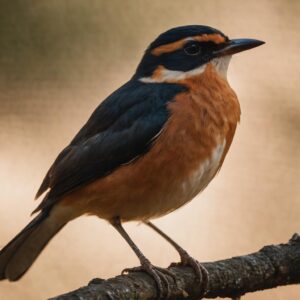
Fascinating Facts About Birds That Will Amaze You
Contents
- 1 Introduction
- 2 Birds can fly at speeds of up to 80 miles per hour.
- 3 Some birds can fly backwards, upside down and even underwater.
- 4 Birds hear in the ultrasonic range.
- 5 Some birds, like owls, have incredible vision in low light conditions.
- 6 Birds have different personalities just like people do.
- 7 Some animals eat birds eggs and young birds because they are opportunistic hunters and will take advantage of food sources that are readily available to them.
- 8 Bird flight has evolved independently at least four times, in hummingbirds, parrots, falcons and passerine songbirds.
- 9 Estimates of the number of bird species in the world vary between 10,000 and 20,000+. The number could be as high as 30,000!
- 10 These facts fascinate me!
- 11 Conclusion
Introduction
If you’ve ever watched a bird fly, you know how beautiful and elegant they are. But did you know that some birds can swim, some can run up to 15 miles per hour on land and another group of birds even swim underwater? Birds are fascinating creatures with diverse capabilities that have adapted over time in order to survive. They have developed unique ways of getting around through their bodies, eyesight and hearing abilities! Now let’s check out just a few interesting facts about them:
Birds can fly at speeds of up to 80 miles per hour.
Birds have a variety of wing shapes and sizes, which allow them to fly at different speeds. The fastest birds in the world have wingspans between 14 and 18 inches, but their bodies are much smaller than those of other birds. This means that their wing-to-body ratio is very high: they can generate more lift per pound than larger species with longer legs and tails. For example, an eagle’s wingspan measures about 6 feet (1.8 meters), but it weighs only 8 pounds (3 kilograms).
The fastest recorded flight speed for any bird species was reached by a peregrine falcon during a dive from an altitude of 9800 feet (3000 meters). The bird reached speeds as high as 200 miles per hour (320 kilometers) before leveling off!
Some birds can fly backwards, upside down and even underwater.
The ability to fly backwards is called retrograde flight. Birds that do this include the hummingbird and albatross. The albatross has been recorded diving at speeds of up to 100 km/h (62 mph) while in pursuit of prey or avoiding predators.[1]
The hummingbird is known for being able to hover in place during flight.[2] It also has a unique method of climbing up walls by beating its wings at a high rate of speed so that it appears stationary from below; this is known as “wind slipping.”[3] Other examples include penguins[4], who use their flippers for propulsion underwater; some species of shearwater[5], which have been observed flying under water when pursuing squid; and some species such as kingfishers[6], which dive into water after fish or insects.[7][8]
Birds hear in the ultrasonic range.
They can hear sounds that are too high for humans to hear, even though they don’t have ears located on their heads like we do. Birds also have a special bone in their beaks called an auditory bulla, which helps them focus on certain frequencies and filter out others.
This ability has helped birds develop sophisticated communications systems among themselves–and some species communicate through calls that only other members of their species can understand!
Some birds, like owls, have incredible vision in low light conditions.
Their eyes are large and forward facing so they can see in the dark. They also have a reflective layer behind their retina called the tapetum lucidum that amplifies light–this helps them see better at night.
Birds have different personalities just like people do.
Birds are more like people than you think. They have different personalities and can be friendly, affectionate and even affectionate. Some birds are shy and reserved, while others are aggressive or independent. Birds that are social with other birds may not necessarily want to be around humans.
There are many species of birds in the world today that scientists have yet to classify because there is so much diversity between them all! So what makes one bird different from another? It all comes down to genetics: some species have been known for their ability to mimic sounds while others cannot make any noise at all (even though we know they’re trying).
Some animals eat birds eggs and young birds because they are opportunistic hunters and will take advantage of food sources that are readily available to them.
For example, the great horned owl has been known to prey on other birds’ eggs as well as their young. This can be problematic if you have a nest of eggs in your yard or garden, so it’s best to keep an eye on them if you see a great horned owl flying overhead.
To protect your bird’s eggs from predators like raccoons or skunks (or even squirrels!), make sure that the nest is secure with no gaps for critters to get into it. You can also use poultry netting around the area where you’ve built the nest box so that no large animals can reach inside it either!
Bird flight has evolved independently at least four times, in hummingbirds, parrots, falcons and passerine songbirds.
The fact that birds can fly is one of the most amazing things about them. But did you know that flight has evolved independently at least four times, in hummingbirds, parrots, falcons and passerine songbirds? These groups of birds are the only ones to have evolved flight from a common ancestor; all other birds are descended from dinosaurs. The first bird to ever take flight was not actually a bird–it was an ancient reptile called Archaeopteryx lithographica (which means “ancient feather writing”). This creature had feathers like modern birds but also had teeth and claws on its wings like those seen in reptiles today.
Estimates of the number of bird species in the world vary between 10,000 and 20,000+. The number could be as high as 30,000!
The reason for this variation is that there are many different ways to categorize birds. A particular species may be considered one or more distinct species depending on who’s doing the classifying and how they’re doing it (e.g., some people consider all white-tailed tropicbirds to be one species; others say there are three).
These facts fascinate me!
- Birds are capable of flying at speeds of up to 200 miles per hour, which is faster than the average horse can run!
- A group of birds is called a flock, herd or pack depending on the species involved in the group. For example, ducks and geese form flocks but chickens do not because they are solitary by nature (they keep to themselves).
Conclusion
I hope you enjoyed these fascinating facts about birds. I know that I did!



Average Rating